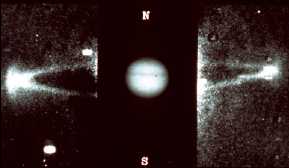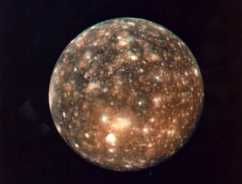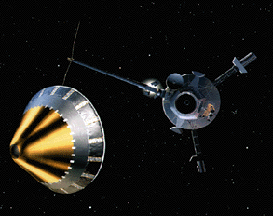Callisto's Atmosphere
The Galileo mission discovered an amazing thing: Callisto seems to have its own atmosphere, although it is very, very thin, and may come and go with time. The atmosphere is created when molecules from the magnetosphere, moving very fast, hit the surface and knock out a water molecule.
One of the instruments on the spacecraft measured the presence of an Ionosphere, a part of the atmosphere that is filled with ions. But it wasn’t always there.
Even though Ganymede and Callisto have thin atmospheres, there does not seem to be a Ganymede or Callisto torus, as there is at Europa and Io.
You might also be interested in:

The Galileo mission discovered something amazing! Europa has its own atmosphere, although it is very, very thin. This atmosphere is created when fast moving molecules in Jupiter's magnetosphere hit the
...more
A satellite which has an atmosphere, such as Jupiter's moon Io, and which also is inside a magnetosphere (unlike the Earth's moon), will leave a cloud of particles behind as it orbits the planet. This
...more
Callisto was first discovered by Galileo in 1610, making it one of the Galilean Satellites. Of the 60 moons it is the 8th closest to Jupiter, with a standoff distance of 1,070,000 km. It is the 2nd largest
...more
The Galileo spacecraft was launched on October 19, 1989. Galileo had two parts: an orbiter and a descent probe that parachuted into Jupiter's atmosphere. Galileo's main mission was to explore Jupiter and
...more
The Galileo spacecraft has finally reached the end of its road. Galileo has been orbiting Jupiter since 1995. On September 21, 2003, Galileo will dive into Jupiter's atmosphere and burn up. This crash
...more
Amalthea was discovered by E Barnard in 1872. Of the 17 moons it is the 3rd closest to Jupiter, with a standoff distance of 181,300 km. Amalthea is about the size of a county or small state, and is just
...more
The insides of most of the moons and planets separated while they were forming out of the primitive solar nebula. Measurements by the Galileo spacecraft have been shown that Callisto is the same inside
...more














